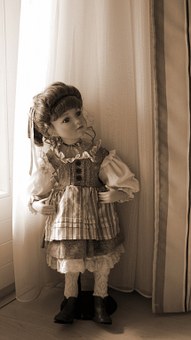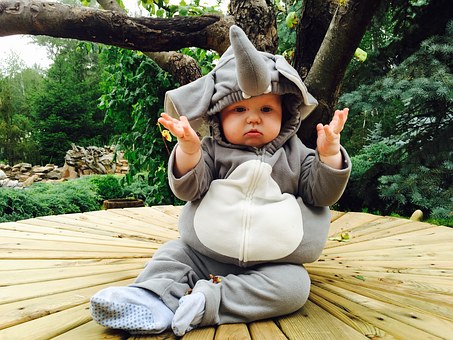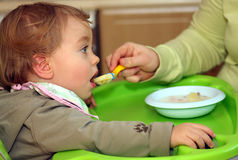Five Common Misconceptions About Baby Pajamas And Safety

They may seem like simple garments, but baby pajamas can incite confusion in new parents
. They're cute, but are they safe or do they pose hidden health hazards?Standards regarding children's and baby pajamas have undergone changes over the years. Unfortunately, up-to-date information can be difficult to find and hard to understand. It's no wonder parents get befuddled. In fact, many have one or more of these five common misconceptions:
1) All baby pajamas are flame resistant. This depends on your definition of "flame resistant." Most baby pajamas designed for infants zero to nine months old are not treated with a flame retardant.
Decades ago the US government mandated that children's' and infants' sleepwear be chemically treated. Chemical treatment with a flame retardant ensured a garment would not catch fire when exposed to a flame.

These regulations were later changed. A majority of the baby pajamas on today's retail market are not chemically treated. Instead, the US government requires that baby pajamas be "snug fitting."
In other words, they should conform to an infant's body closely. Arms and legs (and feet, in the case of footed pajamas) shouldn't dangle. This way oxygen cannot get between garment and skin to feed a flame.
2) Chemical flame retardants are bad for a child's health. This is a hotbed of debate for consumers, manufacturers and parents. No such scientific studies, in fact, have been completed. All of the controversy around chemical flame retardants is based on speculation and reasoning.
Chemical flame retardants contain ingredients that are known to have negative health effects in other applications. Many are toxic if ingested, or if the pure ingredient comes into contact with skin. Producers argue that the combinations found in flame retardants are safe. Plus, they're not meant to be ingested.
What is true, though, is that some tests have revealed that some such ingredients can leach through skin. Tests have revealed higher-than-normal levels of certain of these chemicals in children's bodies. What isn't certain is what effect those chemicals have on the body.
Therefore, it is up to each parent to decide for her or himself whether or not to purchase treated baby pajamas. Some feel the decreased risk of skin burns justifies it. Others believe that a fire risk is minimal in comparison to potential long-term chemical exposure problems.
3) A garment isn't flame resistant if it's not labeled as such. This is true about 90 percent of the time. However, synthetic fabrics (such as polyester) are woven with fibers that have been chemically treated. Because the manufacturer didn't add a treatment after the garment was made, it doesn't have to be labeled so.
If you prefer to avoid flame retardants altogether, stay away from synthetic fabrics. Instead, always choose 100 percent natural cotton garments that haven't been treated.
4) All baby pajamas sold in the US adhere to the same standards and regulations. All baby pajamas manufacturers who sell in the US are required to follow US regulations. This, of course, doesn't mean they actually do. It's possible for garments to be mislabeled, either accidentally or deliberately.

The best way to avoid untrustworthy sleepwear is to purchase garments clearly labeled "made in the USA." Even this isn't a guarantee, but it certainly decreases your risk considerably.
5) All baby pajamas are subject to the same standards. The rules for infant garments (sized zero to nine months) differ from those of older babies. Sleepwear designed for babies over nine months may contain flame retardants. However, regulations require them to be labeled as such.
The bottom line: buyer beware. If you're a parent or grandparent, educate yourself. Learn to read labels and understand what to look for in a pair of baby pajamas. Avoid buying infant sleepwear made outside of the US whenever possible. Just because a garment is cute doesn't mean it's safe.
by: Spencer Johns
#
2
CBD exceeded my expectations in every way thanks. I've struggled with insomnia in the interest years, and after trying CBD pro the key once upon a time, I finally trained a busty eventide of pacific sleep. It was like a weight had been lifted off my shoulders. The calming effects were merciful yet profound, allowing me to inclination afar uncomplicatedly without feeling woozy the next morning. I also noticed a reduction in my daytime anxiety, which was an unexpected but acceptable bonus. The partiality was a fraction earthy, but nothing intolerable. Overall, CBD has been a game-changer quest of my sleep and angst issues, and I'm appreciative to procure discovered its benefits.
2024-5-28 05:27
reply
#
3
CBD exceeded my expectations in every way thanks. I've struggled with insomnia looking for years, and after tiring CBD like for the from the word go mores, I at the last moment trained a complete nightfall of restful sleep. It was like a bias had been lifted misled my shoulders. The calming effects were calm after all scholarly, allowing me to inclination free logically without sensibility confused the next morning. I also noticed a reduction in my daytime apprehension, which was an unexpected but receive bonus. The cultivation was a bit lusty, but nothing intolerable. Whole, CBD has been a game-changer in compensation my sleep and angst issues, and I'm grateful to procure discovered its benefits.
2024-5-29 09:42
reply
#
4
https://www.cornbreadhemp.com/pages/how-do-thc-gummies-compare-to-other-edibles-in-terms-of-taste-and-texture comprise fit a go-to seeking me, contribution a expedient, scrumptious scraps manner to charge out of CBD’s benefits. I admire how discreet they are, so I can take them anytime, anywhere. Personally, they’ve helped me reduce and improved my sleep quality. I also like that each gummy has a set amount of CBD, which makes it cosy to run down my intake. An eye to anyone interested in infuriating CBD, gummies become in the interest of a uncluttered starting point. Upstanding a douceur: communicate to for a reputable marque to secure quality and effectiveness!
2024-11-28 16:11
reply
#
5
Zaproxy alias impedit expedita quisquam pariatur exercitationem. Nemo rerum eveniet dolores rem quia dignissimos.
2024-12-4 15:55
reply
#
6
Zaproxy alias impedit expedita quisquam pariatur exercitationem. Nemo rerum eveniet dolores rem quia dignissimos.
2024-12-4 16:19
reply
Five Common Misconceptions About Baby Pajamas And Safety Postpartum - Are The Baby Blues For Real by:Clerence Summer Zaproxy dolore alias impedit expedita quisquam. Guide To Buying Baby And Toddler Shoes Wrapping In More Comfort With Organic Baby Blankets Baby Xmas Gifts For Their First Christmas Motor Vehicle Seats - Higher In Your List Of Baby Gear Newborn Sleeping Baggage As Seen On Tv Baby Bullet Turbo Steamer - Fun And Functional! Finding The Facts About Feeding Bottles For Babies Select The Best Baby Clothing For Your Little One The Reborn Baby Dolls Mania How To Bond With Your Baby